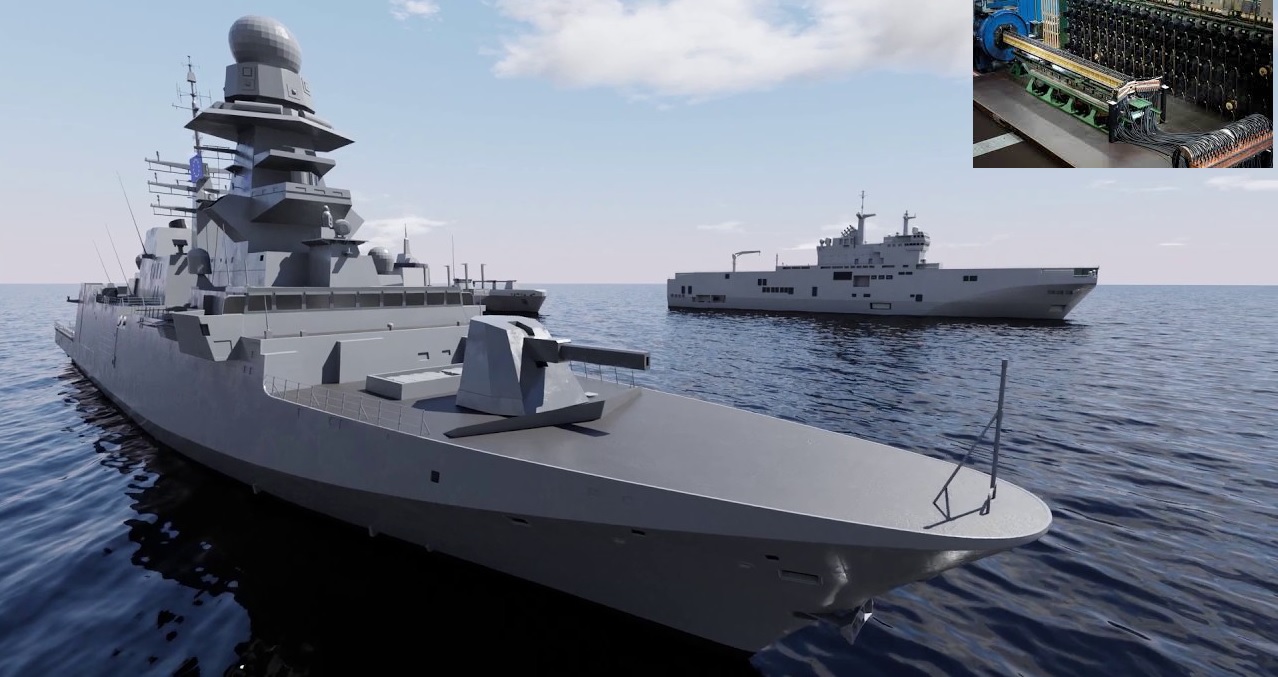Japan Partners with Europe in Cutting-Edge Railgun Research to Revolutionize Electromagnetic Weaponry

Japan has recently taken a significant step in advancing railgun technology by partnering with France and Germany in a collaborative research initiative. This partnership was formalized on May 30th, when the Ministries of Defense from the three countries signed a Terms of Reference (TOR) agreement. The primary goal of this collaboration is to explore the possibilities for joint research, development, testing, and evaluation of railgun technologies. The move highlights Japan's increasing focus on electromagnetic weaponry, aiming to boost its defense capabilities through cutting-edge technology.
Japan's Railgun Development Journey
Japan's interest in railgun technology is not new. The country's research efforts began in 2016 under the "Research on Electromagnetic Acceleration Systems" program, spearheaded by the Acquisition, Technology & Logistics Agency (ATLA) of the Ministry of Defense. The program aimed to achieve a muzzle velocity of 2000 meters per second and a barrel life of 120 rounds. Initial testing saw Japan conduct its first shipboard firing of a railgun in October 2023, marking a significant milestone in its development efforts.
Japan’s focus has been on addressing the challenges unique to railguns, such as barrel erosion caused by heat and wear. Unlike conventional firearms, which suffer from barrel damage due to explosive gunpowder pressure, railguns face issues stemming from the intense heat generated by high current flow and the friction between the armature and the rail. Japan experimented with different materials for the barrel rails, initially using copper before shifting to more resistant alloys. This adaptation resulted in stable performance across 120 rounds, moving the project into its next phase—developing a complete railgun system with mechanisms for continuous firing and fire control.
European Railgun Research: The PILUM Project
On the European side, railgun development has primarily been driven by the PILUM project, an initiative launched by the European Defense Agency (EDA) in 2020 and coordinated by the Franco-German Research Institute of Saint-Louis (ISL). The goal of PILUM is to explore the feasibility of constructing an electromagnetic railgun (EMRG) that can achieve strike distances of up to 200 km, vastly outperforming conventional artillery. The research covers three key areas: the railgun itself, its projectiles, and the energy storage and conversion systems needed to power such a weapon.
PILUM has brought together nine partners from five European countries, including well-known defense companies like Naval Group and Nexter Systems from France, Diehl Defence from Germany, and ICAR from Italy. The project has made substantial progress, particularly in creating a wear-resistant coating for the gun barrel, developing a hypervelocity projectile capable of reaching speeds up to Mach 6, and finding new energy storage solutions such as XRAM generators. This innovative approach to electromagnetic artillery has paved the way for the next phase under the THEMA project, where a demonstrator railgun is expected to be tested by 2028.
The Strategic Implications of Japan’s Collaboration
Japan's involvement in the European railgun research initiative brings a new dimension to the project, combining the expertise and technological advancements made by ATLA with European innovations. While Japan is not directly involved in the THEMA project, this agreement enables smoother exchange of information and ideas, potentially accelerating the practical deployment of railguns in both Japanese and European defense systems. Japan’s recent success in conducting the world’s second shipboard railgun test (after China) further positions it as a key player in electromagnetic weaponry, adding valuable insights to the joint research.
The integration of Japan’s research efforts with European programs also opens the door to potential synergies in naval applications, as both sides work toward deploying railguns on ships. With the technology capable of launching projectiles at hypersonic speeds over vast distances, railguns could revolutionize naval warfare by providing a cost-effective and high-precision weapon capable of countering missile threats and engaging targets beyond the reach of traditional artillery.
Global Context and Future Prospects
The collaboration between Japan and Europe is part of a broader international trend toward developing electromagnetic railguns. Other countries such as the United States, India, China, Russia, and the United Kingdom have also pursued railgun research, albeit at different stages. While the U.S. halted its railgun program after years of development, China and Japan have continued to push forward, with both nations conducting shipboard tests.
Japan’s partnership with Europe could potentially reinvigorate interest in railguns worldwide, as the technology holds significant promise for the future of warfare. As research progresses, key challenges such as energy storage, barrel durability, and thermal management will need to be overcome. The results of the Japan-Europe collaboration may very well dictate how quickly railguns transition from experimental projects to practical battlefield applications.
By joining forces with European nations, Japan is positioning itself to accelerate the development of this disruptive technology, potentially gaining a strategic edge in defense. This partnership could serve as a foundation for future multi-national efforts to bring railgun technology into mainstream military use, transforming how long-range engagements and missile defenses are conducted.


